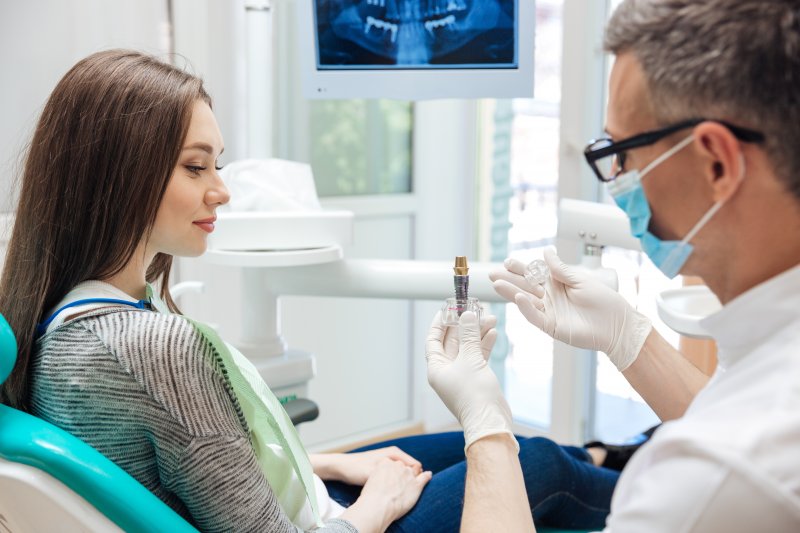
While dental implants boast an impressive success rate of over 95 percent, there’s always a slim chance of failure. Every year, a tiny fraction of patients may experience a loose implant. It can be a frightening situation, especially with how much you invested in the procedure.
If you want to learn what to do in the event of a failing dental implant, continue reading. You’ll find the reasons behind implant failure and learn the steps to take to resolve it.
Why Are My Dental Implants Loose?
There are several reasons why an implant could loosen after it’s placed. Here are a few of the most common:
- Insufficient bone integration – Sometimes after a post is placed in the jawbone, the bone around it becomes or remains too thin to hold onto the implant. This leads to the post not being able to fuse with the bone correctly.
- Infection – Gum disease or other infections can slowly degrade bone if it spreads far enough, leading to the loosening or failure of dental implants.
- Complications during the healing process – If the site of the implant never properly heals, it doesn’t form proper connections with the gum tissue or bone, causing it to be loose.
What to Do if Your Dental Implants Become Loose
If you notice your dental implant feels loose, it’s essential to act quickly. Contact your dentist immediately to report the issue. In the interim, avoid touching the implant and refrain from chewing on that side of your mouth to prevent further stress.
Step 1: A Dental Exam for Your Dental Implants
Once you’re in your appointment, your dentist will conduct a thorough examination to check the stability of the implant. This may involve diagnostic imaging to identify any structural issues or complications. Based on the evaluation, your dentist will recommend an appropriate treatment plan.
Step 2: A Treatment Plan
Treatment for a loose dental implant depends on the underlying cause. If the issue is related to infection, your dentist may treat it with antibiotics. In cases of insufficient bone integration, your dentist may recommend additional procedures to enhance stability.
Step 3: Possible Diagnostics and Reintegration for Your Dental Implants
In some cases, the implant may need to be temporarily removed to address complications. Your dentist will discuss options for reintegration, whether it involves additional bone grafting, adjusting the implant’s position, or replacing it with a new one. Whatever happens, your dentist will be beside you to help ensure the long-term success of your dental implants.
While loose implants are rare, understanding the potential causes and taking prompt action is essential. Contact your dentist quickly if you experience any concerns. With professional intervention and a good treatment plan, you’ll be back to smiling with your new dental implants in no time.
About the Author
Dr. Mohammad Golparvar is a skilled dental practitioner with over 20 years of experience. He earned his dental doctorate at the Boston University School of Dental Medicine and then attended a post-graduate program where he specialized in dental implants. Now, at his ultramodern facility, he uses the latest dental technology and techniques to provide top-notch dental care for all his patients. Call (603) 669-4252 to schedule a dental implant consultation at Webster Dental Associates of Manchester, or visit the website to discover other services they provide.
